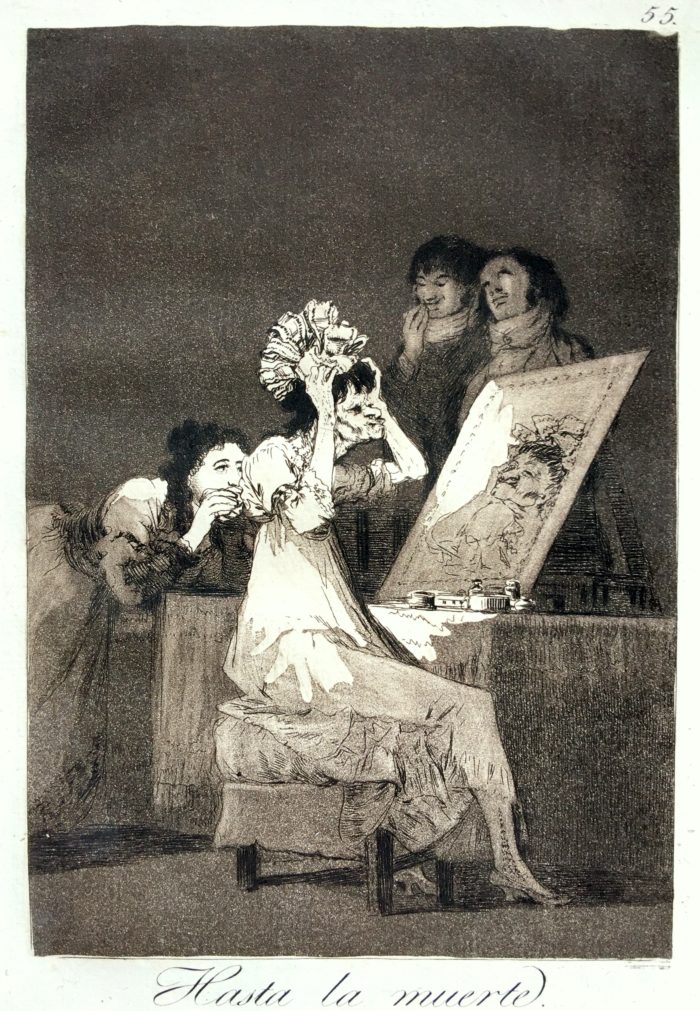Until Death (Hasta la Muerte)
Monday, May 10th, 2021Francisco de Goya y Lucientes (1746-1828), 1799, etching, burnished aquatiint and drypoint. Reference: Harris 90, First Edition, plate 55 from the Caprichos. Printed on fine quality strong laid paper. In very good condition, the full sheet, 8 3/4 x 6 1/8, the sheet 12 1/8 x 7 15/16 inches.
A brilliant early impression of this iconic image, from the First Edition. The aquatint, dark in two tones, here contrasts well with the highlights on the maid, the old woman, the dressing table and the mirror. Consistent with the earliest impressions, there is a slight touch of drypoint burr on the right cheek of the maid (this wears off in later impressions of the first edition).
Goya’s commentary: She is quite right to make herself look pretty. It is her seventy-fifth birthday, and her little girl friends are coming to see her.
Los Caprichos, the earliest of the major Goya series, is a series of 80 engravings, published initially in 1799 by Goya himself. Goya produced a number of working proofs for these engravings, without the letters found on the bottom margin or the numbers at the top. Only two are known before aquatint. Then letters were added; more trial proofs taken and the letters on a number of these proofs corrected. These early proofs, and a few complete early sets, are fairly well documented; their location is known. In 1799 the prints were published in an edition of about 300, on fine quality strong laid paper, the sheets measure about 320 by 220 mm, in a warm sepia ink. These prints, in the First Edition, are each (of course) lifetime impressions. They vary a bit in quality, for as the run went into the hundreds the aquatint began to wear out, the different layers of shading became less distinct. But in general these prints are fine impressions.
In 1855, long after Goyas death, the Calcografia in Madrid issued another set of Los Caprichos, now on wove paper. This edition was small, and the quality was generally good although variable. But the prints are not comparable to those of the First Edition. The Calcografia produced another edition (the Third Edition), also on wove paper, in 1868. Further editions were done in the late 1800s, with various inks, still on wove paper, and the plates continued to deteriorate. The plates were then steelfaced (a tiny layer of steel applied to them, to halt the deterioration). More editions were produced by the Calcografia, with various papers, watermarks, sizes and inks, up through the 12th Edition, issued in 1937.
All of these posthumous edition impressions are in some sense original Goya prints, i.e., they were taken off of the original plates. The editions, almost all originally in bound volumes of 80, have been broken up and impressions are sold singly. Connoisseurs of course prefer the impressions from the First Edition, and the earlier impressions from that edition if possible.


